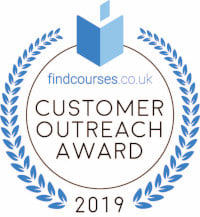Course description
Advanced technical authoring (2 days)
Teaches further techniques for producing professional standard technical documentation that is clear, concise and successfully meets the needs of users. Sessions cover:
- Copy editing and proof reading.
- Business and design standards for technical documentation.
- Checking document integrity.
- Graphics.
- Grammar issues.
- Editing and writing with others.
New modules added recently: - Writing for Multiple Platforms
- An introduction to topic-based authoring, XML and DITA.
Self-funders can spread the cost over 12 months, interest-free.
Upcoming start dates
Training venue
This Advanced technical authoring training course is hosted at our centres in Bromsgrove (near Birmingham), Bristol and Reading.
For our Bromsgrove courses, we offer a free daily taxi service from Central Birmingham to our training centre.
Delegates can enjoy fantastic facilities at our centres, with lunch and refreshments included.
Suitability - Who should attend?
Delegates should have attended Introduction to technical authoring and Intermediate technical authoring, or have equivalent knowledge.
Outcome / Qualification etc.
Technical authoring e-certificate
Upon completion of the course, delegates receive an e-certificate confirming they have attended and successfully completed Advanced technical authoring training.
Training Course Content
This course typically covers the following topics:
Defining readability
The technical writing process
- Building readability
- How people take on information
- Working with how the brain works
Given/new and readability
- Given/new – using a universal glossary
- Structuring for readability
- Reducing inferential load
Signalling in your document
- Signalling with headings
- 3-step process for effective headings
- Signalling with sentences
- Customer-focused persuasion
Business and design standards for technical documentation
Standards for technical writing
- Darwin Information Typing Architecture
- DITA and XML
- Company style guides and standards
- External standards
Types of style guides
- Example style guide content
- Creating a style guide
- Using editorial reference guides
Creating better graphics
Designing the page
- How readers process technical documents
- Improving your document’s functionality
Basic rules of graphics
- Controlling layout with tables and grids
- Microsoft Word vs DTP software
Page design:
- Typefaces, fonts, and white space
- Layout and alignment
Expressing information with graphics
- Identifying what works as a graphic
- Getting the right level of detail using, photos, drawings and charts and graphs
Checking document integrity
Formal document structure and templates
- Headings and the ToC
- Other tables and lists
- Checking
- Captions and graphics
- References and notes
Online vs print
- Checklists for print and online
- Checklist for online
Copy editing and proofreading
- Marking up proofs
- Using formal proof correction symbols
- Checking your text
- Checklist: proofreading and copy editing
Writing for multiple platforms
Targeting your platforms
- Size and shape of the screen
- Using responsive design
How readers scan pages online
- Identifying what must be written
- Building the inverted pyramid
Headings, menus, and links
- 3-step process for effective menus:
- Menus vs. links
- Writing links that work
The online hierarchy
- 4 key criteria for an effective home page
- Creating transitional and content pages
Accessibility initiatives
- Basic accessibility guidelines
- BBC online rules
Grammar issues
Focusing sentences to communicate to the reader:
- Putting the reader first
- Different types of sentence
- Making your writing more concrete
Key grammar problems in technical authoring
- Subject-verb agreement
- Complete sentences
- Missing information
- Unreadable text and how to fix it
Grammar and syntax
- Usage issues
- Creating cohesion terms: redundancy and transitions
- Using parallel construction: sentences, tables and lists, headings
Editing and writing with others
Planning to meet your deadlines
- Planning and estimating
- Planning metrics
- Meetings: objectives, rules, top ten issues, checklists
Feeding back to team members
- The SBI model: delivering effective feedback
- Questions to ask in difficult situations
- People problems: communication styles*
Creating communication in the work environment
- VAK: seeing, hearing, feeling
- Filtering information with VAK preferences
- Benefits of VAK preferences
- Keeping the team Informed
- increasing team involvement
Capstone exercise
- Putting it all together
Why choose Armada
4.9 stars Google Review rating
Over 96% delegate experience rating on our Autodesk courses in 2021
5 locations across UK and live online courses
Customer Outreach Award 2019

We believe that it should be easy for you to find and compare training courses.
Our Customer Outreach Award is presented to trusted providers who are excellent at responding to enquiries, making your search quicker, more efficient and easier, too.
Expenses
Course fees are inclusive of all relevant course documentation, refreshments and a buffet lunch. Discounts available for multiple bookings. Delegates are also entitled to 30 days' after-course support via email.
On-request training
We can also provide one-to-one training or a 'closed course' for your group at one of our centres, or your venue anywhere in the UK. These can be tailored to your specific needs, taking into account delegates’ existing knowledge, and the skills gap identified.
Armada
We specialise in: CAD design training. Our expert trainers cover the most popular CAD applications including AutoCAD, Revit, Fusion, SketchUp, Civil 3D, 3ds Max, used across all industries - architecture, engineering, interior design and others. Creative, video and animation training...

